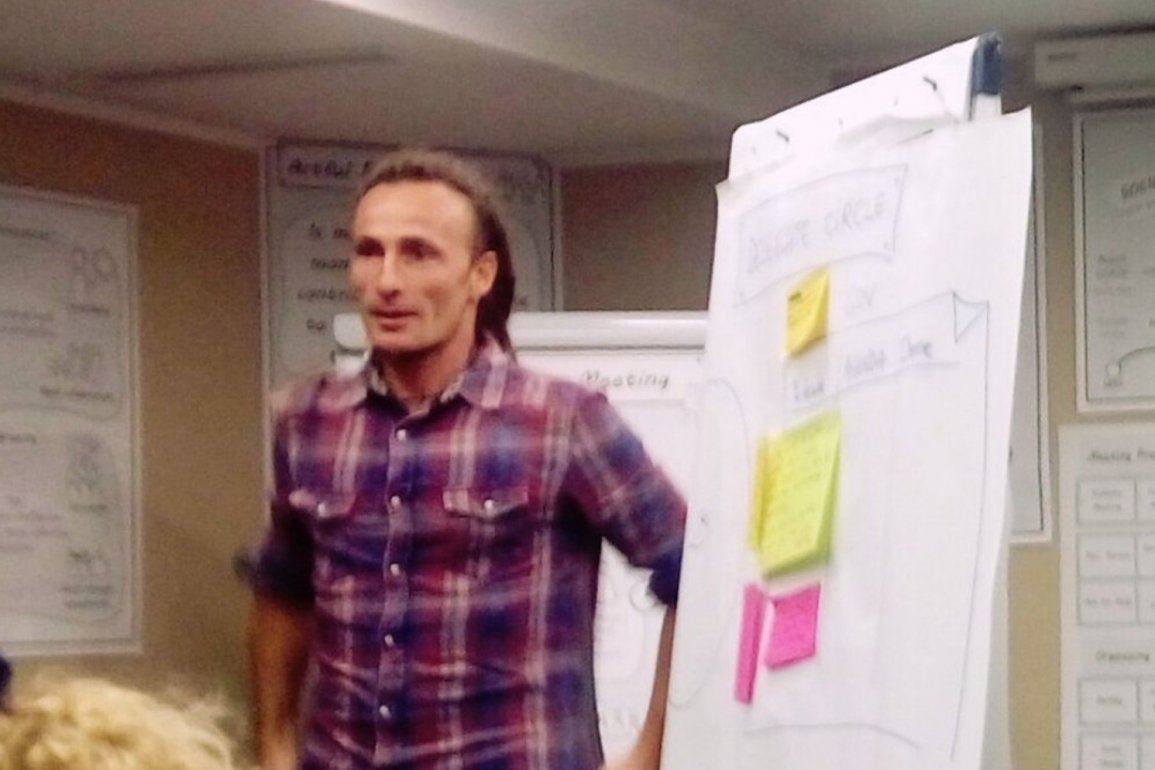By Ewa Koprowska and originally published in linkedin.com/pulse
Reef Technologies: Sharing our learning with Sociocracy3.0
At a recent Friday meeting of the Reef Technology team, we discussed whether we needed articles to record our learnings with Sociocracy 3.0 (“S3”) for the benefit of future generations of Reef and for our colleagues elsewhere. We, the Reefmates, work with the general assumption that we do not do things unnecessarily.
Considering that not many of us read the second article, we started wondering if these articles were a waste of time. We reached a consent that we would inspect and amend the writing process to suit Reef’s needs. Please, pay attention to the difference between “consent” and “consensus”: “consensus” literally means: a general agreement about something, “consent” is an agreement when nobody in the group can explain a reason why not to do it this way.
We have tried a different approach in this article. I would love to hear your thoughts on this article. Please feel free to send your feedback at [email protected].
70 patterns, 7 principles and a couple of significant concepts: Domain and Driver
We were pondering over how to use S3 elements in our organization today. I think it is good to be a practitioner, but it is worth knowing the theory so as not to shoot in the dark. However, theory without reference to reality and context degenerates into entertainment for intellectuals without practical application. That is why it is worth having someone who not only knows all the elements of S3 but also the organization in which Sociocracy is to be implemented.
Why are both – theory and practice – necessary? Because only after understanding both can you ascertain which element of Sociocracy is currently the most needed and relay that to the team. Such a vision for the implementation of Sociocracy in Reef was presented to us today by Paweł.
I must warn you that there is a seemingly complicated diagram below. It shows 10 categories of patterns which means 70 patterns in total and 7 principles. To be honest, I don’t think we’ll use all of them but it is good to first understand the whole picture. I’ll tell you why: when you decide to use Sociocracy 3.0 patterns, it is very important to wisely consider which pattern suits your company the best.
It is also very important to know which category your pattern belongs to and to understand the other patterns from the same category. The patterns from the same category complement each other. Often a group pulling in S3 patterns will use most patterns from the Co-creation and Evolution category. They might use most from Enablers of Co-creation or Defining Agreements but this would not make sense in all cases – take the patterns for the organizational structure, for example, you would unlikely use all of the patterns there.
I want to share with you the whole picture, which I have borrowed from the Sociocracy guide (available here: http://sociocracy30.org/guide/). Don’t be scared. It took me almost a year to internalize the Sociocracy 3.0 model’s simplicity.
The beauty of Sociocracy is that it works even if you choose only the elements that you need and discard the rest. You need to implement the elements of the S3 Practical Guide through a series of experiments through which you achieve the best fit for you and your team.
The seven principles
The seven principles are the key to achieving effectiveness in cooperation, which is why we need to look at them again even though we have discussed them before. Without making these principles a part of your company culture, it will not be possible to achieve mastery in Agility. Upon application of these principles, it will be possible to do only what needs to be done, with effectiveness and agreeing via consent.
Please look at the picture below and compare it with your company’s reality.
Did you find any differences? If yes – very well. It is a good start to change. Do you want to improve your company? If yes – let’s do an exercise.
The following is to brush up our memory and improve our understanding of the seven principles through an exercise. I will ask two difficult questions for each of the seven principles. Please be prepared to answer them at our next meeting. Why should you answer these questions? To realize why these guidelines are important and to comprehend how these guidelines are implemented in your daily professional lives.
- Effectiveness: Devote time only to what brings you closer to achieving your objectives. What action did you take to increase the effectiveness of your team’s work last month? What were your goals last week?
- Consent: Do things in the absence of reasons not to. Sociocracy uses “consent” decision-making. Consent is defined as an agreement with “no objections.” An objection must be reasoned and constructive. Please recall and tell us about the last meeting when your team reached an agreement via consensus. Did anybody have an objection to the agreement? What was the reason for that objection?
- Empiricism: Test all assumptions through experiments, continuous revision, and falsification. Give an example of an experiment that you carried out in your team last month. What did you learn from the outcome of this experiment?
- Continuous Improvement: Change incrementally to accommodate steady, empirical learnings. Tell us about a process that you improved at your work in the last quarter. Look at the beginning and the end of the last quarter in the context of the changed process described above. What value was derived from the changes you had made?
- Equivalence: Involve people in making and evolving decisions that affect them. Point out an action that shows that in Reef we apply the principle of equivalence. Provide an example of an action that shows that in Reef we do not always apply the principle of equivalence.
- Transparency: Make all information accessible to everyone in an organization, unless there is a reason for confidentiality. Cite an example of an action that shows that in Reef we apply the principle of transparency. Share an example of an action that shows that in Reef we do not always apply the principle of transparency.
- Accountability: Respond when something is needed, do what you agreed to and take ownership of the course of the organization. Give an example of a behavior that shows that you took on responsibility for some change in your organization. Why did you decide to assume the responsibility for this change?
“ Equivalence is so important precisely because as human beings we are NOT equal! Equality is a fallacy but equal opportunity to object by those affected by decisions brings equivalence.” James Priest.
Yes, I know that answering these questions is going to be exhausting, possibly even frustrating. But your effort and the consequent exhaustion and frustration are the prices you have to pay to change for the better. Answering these questions will help people to learn how to contribute even more towards the potential awesomeness of your organization. Regardless of whether you want to learn Sociocracy or not, you are more than welcome to share any comments or ask questions.
The seventy patterns
The seventy patterns of sociocracy, grouped into ten categories, were created on the basis of many years of observation of various organizations that were looking for a way to improve cooperation. Paweł does not like articles that are too long, which is why I revisit them sometime later, one by one.
The changes we have introduced in Reef in the recent months are based on several benchmarks concentrated in the first category: Co-Creation and Evolution. Why did we focus on this category? In such a small company the cooperation and mutual development of each one of us results in the development of the company as a whole. A small startup is extremely sensitive to internal conflicts, tensions and lack of understanding. That’s why we are talking about “navigate via tension”. That’s why we are learning how to identify and formulate drivers that emerge from these tensions. That’s why, every Friday, we look for consent for common solutions.
We have understood and changed quite a lot recently. Nevertheless, a lot of interesting discoveries lie ahead of us. Fortunately.
Republished by permission of the author.
Featured Image/graphic link edited by Enlivening Edge Magazine. The original has this caption: I would like to thank James Priest for the effort and expertise that he contributes to reviewing this article.




